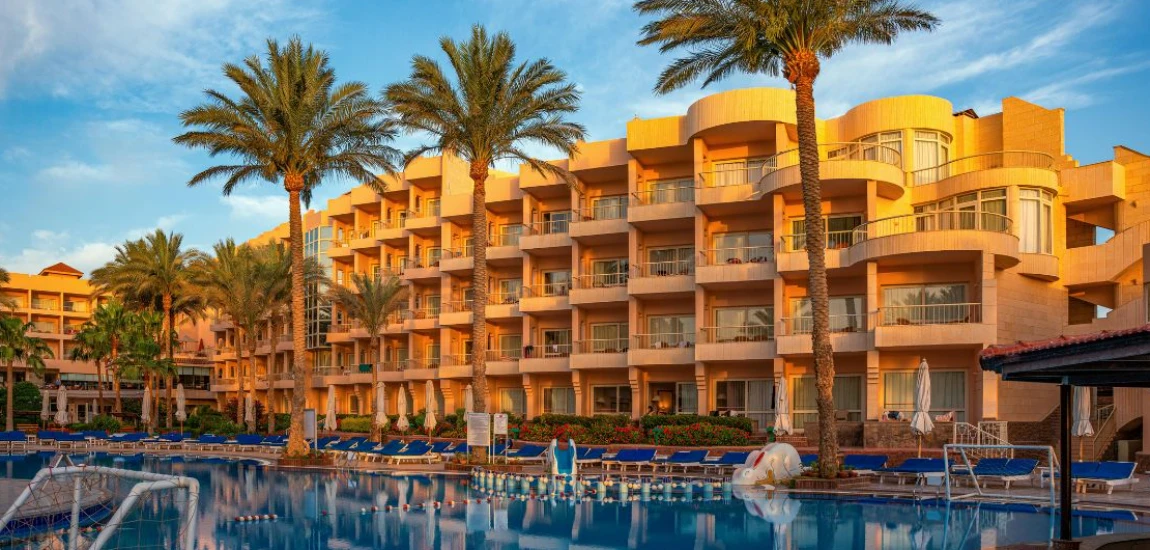Hotels Where the View Changes Every Hour

Most hotels promise comfort, luxury, or location, but some offer something even more extraordinary—the chance to wake up to a view that never looks the same twice. These are the hotels where the view changes every hour, places where nature, weather, and even human activity constantly reshape what you see outside your window.
Imagine sitting in a mountain lodge where clouds drift across jagged peaks, sometimes hiding them completely, then suddenly revealing snow-covered summits bathed in golden light. Or staying in a desert resort where the morning dunes glow orange, only to transform into deep shadows by evening, and finally give way to a sky filled with a million stars. On the coast, tides dramatically redraw the shoreline every few hours, turning bustling fishing harbors into sandy playgrounds and back again. Even cities, often thought of as static, surprise guests with views that pulse with life—lights flickering on, rivers flowing with reflections, and skylines that evolve from dawn’s calm to midnight’s sparkle.
What makes these stays so remarkable is that they invite travelers to slow down. Instead of rushing out the door, you might find yourself sitting longer on a balcony, mesmerized by how quickly the world outside changes. These hotels transform the act of simply looking out the window into an experience as memorable as the attractions you came to see.
In this guide, we’ll dive into five categories of dynamic stays: oceanfront hotels where tides reshape the coast, mountain lodges where clouds paint moving masterpieces, desert retreats where light and shadow play across endless sand, city hotels where skylines shift with time, and lakefront escapes where water mirrors the world in ever-changing ways.
Oceanfront Hotels with Tides That Transform the Shoreline
The ocean has always fascinated travelers, but some coastlines are particularly dramatic because they are shaped by powerful tides. Staying at an oceanfront hotel where the tide changes drastically every few hours means that your view is never static—it’s a living performance put on by nature.
At high tide, the sea may rush all the way up to rocky cliffs, creating a sense of infinite blue stretching out from your balcony. Waves crash close to the property, and boats glide across the water, reflecting morning light. But wait a few hours, and the scene transforms completely. The tide recedes, revealing sandbars, tide pools, and rocky shelves that were previously hidden. Fishing boats may now rest on the sand, waiting for the next swell to lift them, while seabirds swoop down to feed on the exposed marine life.
Hotels in tidal regions—like Mont Saint-Michel in France, the Bay of Fundy in Canada, or certain parts of Cornwall in England—capitalize on these transformations. Many properties provide tide charts at check-in, encouraging guests to plan walks or photography sessions around the natural rhythm of the water. Morning may be best for exploring tide pools, while evenings provide perfect conditions for reflective sunsets on the wet sand.
What makes these hotels so special is that they allow travelers to witness the ocean in its full cycle, not just as a backdrop but as a dynamic character in their journey. Each hour reveals a new personality of the sea. For those who love photography, tide-sensitive locations are a dream because they offer multiple opportunities to capture landscapes that look entirely different in the span of a single day.
Choosing an oceanfront hotel with strong tidal changes means you’re not just booking a place to sleep—you’re booking front-row seats to nature’s most reliable yet unpredictable show.

Mountain Lodges Where Clouds Paint New Pictures
There is nothing more mesmerizing than watching mountains shift moods throughout the day. Unlike flat landscapes, mountains interact with weather in dramatic ways, making mountain lodges some of the best hotels where the view changes every hour.
At sunrise, peaks may glow in soft pinks and oranges, with mist clinging to valleys below. By mid-morning, the sky clears, and jagged ridges stand out against a bright blue backdrop. As the day progresses, clouds roll in, sometimes covering the mountains entirely, leaving only glimpses of snow-capped tops or green foothills. Guests often describe the experience as watching a movie where the plot changes unpredictably every hour.
Hotels in the Swiss Alps, the Canadian Rockies, or Nepal’s Himalayan villages are designed to showcase this natural theater. Many lodges feature floor-to-ceiling windows, balconies, or infinity pools overlooking the mountains. Some even provide telescopes so that guests can focus on glaciers, wildlife, or distant trails that appear and disappear depending on the weather.
The magic lies in the unpredictability. One moment you may think the view is lost in fog, only for the clouds to part dramatically and reveal a rainbow or a snow peak glowing in sunlight. Photographers often camp in these lodges for days, knowing that each hour offers a different chance to capture a once-in-a-lifetime shot.
For travelers seeking peace, the constant change in scenery encourages mindfulness. Sitting by a window with a cup of tea and simply observing how clouds shift across a ridge can be more meditative than any planned excursion. It’s a reminder that nature is alive and in motion, even when we are still.
Mountain lodges with dynamic cloudscapes remind us that travel isn’t always about doing more—it’s about noticing more.

Desert Hotels Where Light and Shadow Redefine the Landscape
Deserts may seem like empty spaces, but in reality, they are some of the most visually dynamic environments in the world, and the hotels nestled within them offer front-row seats to this natural drama.
At dawn, sand dunes are painted in deep shades of red and orange, the cool air still holding traces of the night. As the sun rises, the colors shift to brilliant golds, and long shadows stretch across the landscape, creating patterns that look like giant brushstrokes. By midday, the desert appears bleached under a blinding sun, heat waves shimmering in the distance. Evening brings back softer tones, with the sky transitioning through purple, pink, and finally star-studded blackness.
Hotels in places like Morocco’s Sahara Desert, Namibia’s Sossusvlei, or Utah’s red rock canyons are often designed with wide terraces, rooftop lounges, and open-sided tents to make the most of these shifting views. Some luxury desert resorts even feature starlight observatories, allowing guests to transition seamlessly from watching dunes by day to galaxies by night.
What makes deserts unique is their dual personality. In the daylight, they showcase ever-changing light and shadow on earth’s surface, but at night, they reveal the universe above with breathtaking clarity. Staying in a desert hotel means witnessing two landscapes—one terrestrial, one celestial—without ever moving from your spot.
Travelers often describe the experience as deeply grounding. The desert’s silence makes the changing views more noticeable, reminding us of the passage of time and the rhythm of nature. Every hour brings a different mood, and no two visits look the same.
By booking a desert hotel, you’re not just choosing a remote destination—you’re choosing a natural theater where sunlight and starlight alternate in shaping a world of beauty.

City Hotels Where Skylines Never Sleep
Cities are often thought of as unchanging, but in reality, they are some of the most dynamic landscapes to observe from a hotel window. Booking a city hotel where the skyline changes every hour gives travelers a completely different kind of view: one shaped by human life, movement, and light.
In the early morning, skyscrapers reflect the rising sun, their glass facades glowing in soft pinks and oranges. Streets begin to fill with people, and the hum of activity grows visible from above. By midday, the city is in full motion—cars streaming along highways, ferries crossing rivers, construction cranes lifting new structures into the skyline. Evening transforms the same scene into something else entirely. Lights flicker on, neon signs pulse, and buildings become illuminated silhouettes against the twilight sky. By midnight, the city glitters like a galaxy of its own, buzzing with nightlife and energy.
Hotels in New York, Tokyo, or Dubai are particularly famous for skyline views. Rooftop bars, revolving restaurants, and high-rise rooms offer panoramic perspectives that feel alive, even if you never step outside. For example, in Manhattan, staying near Times Square means witnessing waves of lights and people that shift in intensity every hour. In Tokyo, neon lights flicker differently each evening, creating a futuristic glow. In Dubai, the Burj Khalifa transforms depending on the time of day, from reflective steel in the morning to a glowing beacon at night.
What makes these views so captivating is that they remind us that cities, too, breathe. Human activity creates its own kind of natural rhythm, constantly reshaping what the eye sees. For travelers who thrive on energy and excitement, city hotels with skyline views are as thrilling as mountain or ocean stays.
Every glance outside feels like watching an urban heartbeat. For photographers, artists, or anyone who enjoys people-watching, these hotels turn city life into an ever-evolving show.

Lakefront and Riverside Hotels with Reflective Drama
Water has a unique ability to double the beauty of a landscape through reflection. That’s why lakefront and riverside hotels are some of the most peaceful yet ever-changing stays in the world.
At dawn, lakes often look like perfect mirrors, reflecting mountains, trees, and skies in symmetrical harmony. As the day progresses, breezes ripple the surface, breaking the reflection into shifting patterns. Afternoon light makes the water sparkle, while evening sunsets paint it in streaks of orange and purple. Each hour offers a new variation of the same scene, making lakefront hotels ideal for travelers who appreciate subtle but profound changes in scenery.
In iconic spots like Lake Como in Italy, Lake Louise in Canada, or Lake Bled in Slovenia, hotels are carefully designed to maximize views. Balconies, outdoor dining terraces, and spa areas are oriented toward the water, so guests can relax while watching reflections shift. In some cases, seasonal changes add even more drama—spring brings blossoms reflected on the lake, autumn covers it in fiery foliage, and winter turns it into a glassy sheet framed by snow.
Riverside hotels provide a slightly different but equally dynamic experience. In Paris, staying near the Seine means watching boats drift by, bridges light up at night, and ripples reflecting the Eiffel Tower’s glow. In Budapest, the Danube changes character throughout the day, from calm mornings with fishermen on the banks to vibrant evenings when the Parliament Building shines across the water.
These hotels are not only about visual beauty but also about mood. Watching reflections on water is calming, meditative, and endlessly fascinating. Even if you sit in the same chair all day, you’ll never see the same scene twice.
For travelers seeking both serenity and dynamism, lakefront and riverside hotels provide the perfect blend—reminding us that even still water is never truly still.

Tips for Choosing Hotels with Ever-Changing Views
If you’re tempted to book a hotel where the view changes constantly, here are some practical tips to make the most of it:
Research the natural setting: Look for hotels near tidal areas, high mountains, deserts, or reflective bodies of water. Each environment has its own rhythm of change.
Ask for the best room: Higher floors, corner suites, or balcony rooms maximize your perspective. Don’t be afraid to request a view-facing upgrade.
Consider the season: Some landscapes are most dynamic in particular seasons—like snowy mountains in winter or deserts during rare blooms.
Plan downtime: Don’t pack your itinerary so full that you miss the chance to simply sit and enjoy the unfolding views.
Bring binoculars or a camera: Whether you’re capturing wildlife, skyline lights, or desert stars, a little gear can help preserve the memory.




